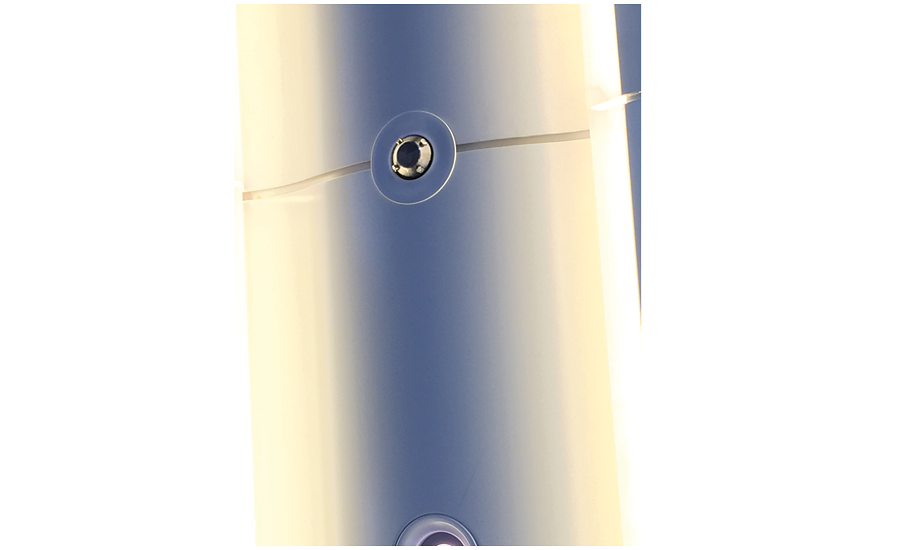Water mist system — which are commonly confused with automatic sprinkler systems — are defined in NFPA 750 (Standard on Water Mist Fire Protection Systems) as sprays for which 99% of the volume of the spray is contained in droplets less than 1,000 microns in diameter.
Although many attempt to distinguish water mist systems from other similar water-based suppression systems solely on the water droplet size, it is important to note the other distinctive features a water mist system provides. Those include spray characteristics, system components and extinguishing mechanisms, which allow these systems to be effective in a multitude of diverse applications.
While many people still associate water mist systems with the fire protection systems installed on ships, the range of applications travels far beyond the sea. From the original concept in the 1940s of protecting machinery spaces on vessels at sea level, to present day applications where water mist technology is being utilized in the thermosphere to protect the International Space Station, water mist systems have continuously evolved with the changing demands throughout the years.
Other applications include, but are not limited to, tunnels, heritage buildings, essential equipment rooms located in nuclear power plants, as well as the protection of trains and hotels. These diverse settings share a unique need for the features a water mist system can provide.
In response to the sinking of the Titanic in 1912, the first fire protection requirements for international shipping were developed as part of the 1914 Safety of Life at Sea Convention. Through trial and error, as well as advancements in technology, improvements were made in each edition of the SOLAS Convention. Eventually, the 1974 edition required a fixed fire sprinkler system or a fixed fire detection system to be installed on new passenger ships.
In the early 1990s, two major incidents increased the interest to further develop water mist systems. In response to a fire onboard a passenger ship that killed 158 people, the International Maritime Organization adopted a comprehensive set of fire safety amendments, applicable to both new and existing passenger ships. The amendments required the installation of the latest fire safety features applicable to a modern hotel, including automatic sprinkler and smoke detection systems.
The second event occurred in 1989 following the Montreal Protocol, which required the replacement of halon, an ozone-depleting substance used for decades to protect machinery spaces, flammable liquid rooms, computer rooms and rooms with materials sensitive to water damage. The outcome of these incidents required the need for a system that could protect spaces where the amount of stored and discharged water is limited; minimize droplet size and application rate; enhance evaporation to extinguish hidden fires; utilize smaller diameter piping; and
ideally costs less.
Meeting of the minds
To accomplish this the NFPA Technical Committee on Water Mist was developed in 1993. The group began to standardize water mist technology, and provide guidance for a reliable design and installation of water mist systems.
Spray characteristics for water mist systems are different from other similar water-based fire suppression systems in that factors such as fuel properties, enclosure effects, spray flux density and spray velocity all need to be considered in determining if a water mist system can extinguish a particular fire.
NFPA 750 does not assign an optimum drop size distribution as a universal design variable for water mist systems for a specific hazard. Unlike standard sprinklers, the flux density that successfully achieves the performance criteria of a fire test varies, depending on all the spray characteristics including drop size distribution, flux density and spray momentum, as well as additives.
The primary extinguishing mechanisms also differentiate water mist systems from automatic sprinkler systems and water spray systems. Heat extraction, oxygen displacement and blocking of radiant heat are the primary extinguishing mechanisms for water mist systems. Vapor/air dilution and kinetic effects are secondary extinguishing mechanisms. Different hazards require different types of water mist and take advantage of different combinations of these extinguishing mechanisms.
In the event of a fire, a water mist system allows the evaporation of the water droplets to cool the flames, reduce the heat and displace oxygen by creating steam to help smother the fire. In addition, the small droplets of water mist allow the mist to be entrained more effectively than a typical sprinkler spray, which allows the water mist droplets to be pulled into the hard-to-reach areas and make a significant impact in applications with obstructions.
Water spray and automatic sprinkler systems suppress fires differently, primarily by wetting the surfaces of fuel and the surrounding structures to cool the structures and the fuel surfaces to control or suppress a fire. The differences in these extinguishing mechanisms allow water mist systems to suppress fires in unique environments where automatic sprinklers or other fire suppression systems may not be as effective.
Where it fits
The common applications most people associate with water mist systems include the protection of heritage buildings, as well as museums and galleries where water mist systems can provide fire protection without damaging the treasures inside. St. Mark’s Basilica in Venice, Italy, and The National Gallery of Art in Washington, D.C., have water mist systems installed in portions of their facilities to protect the space with a minimum amount of water and without damaging the iconic buildings. The mechanisms used to protect these spaces include cooling of hot gases near the ceiling to minimize the occurrence of flashover and direct wetting of Class A combustibles.
In 2013, a high-pressure water mist system was installed in the attic of St. Patrick’s Cathedral in New York City. There were concerns about installing an automatic sprinkler system in this space due to the amount of water that would be discharged on the fragile ceiling in the event of a fire. However, the decrease in potential discharged water was not the only benefit to installing a water mist system. The flexibility and lightweight nature of the piping allowed installers to easily adjust the system design around the structural elements of the cathedral’s ceiling.
Alternatively, consider the environment of a machinery space that contains equipment, diesel fuel, as well as lubricating or hydraulic oil. In an effort to replace halon or carbon dioxide systems, water mist systems can be installed to extinguish fires involving spilled or sprayed flammable liquids. The systems will cool the flames and hot gases using a limited amount of water, displacement of oxygen through the steam that is created when the system activates, and the dilution of the air and fuel vapor mixtures.
A similar application includes the protection of a turbine enclosure, specifically the protection of its fuel lines. In this situation, it is critical the activation of a suppression
This article was originally titled “Beyond the sea” in the March 2016 print edition of PM Engineer.


